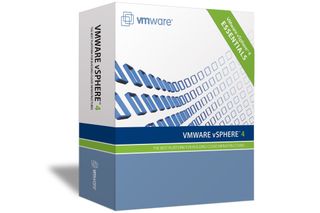VMware unveils vSphere data centre OS
VMware has finally released its virtual data centre operating system.

VMware's vSphere virtual data centre operating system (VDC-OS) has finally been released, bringing with it the virtualisation firm's promise of creating an internal cloud.
First announced last Autumn and named earlier this year, vSphere ties together servers, storage and networking, as well as organising applications and security whether physical or virtual.
VMware claimed such a system allows the ideas of cloud computing to be brought into the enterprise, as well as letting internal systems connect to external clouds when necessary.
Aside from the "internal cloud," VMware representatives and analysts at the launch also dubbed the system "IT as a service," a "private cloud," "virtual mainframe," a "giant computer," and a "software mainframe."
Matt Piercy, VMware's regional director for Northern Europe, said it could also be seen as a virtual private network, as it could let firms use "publicly available services and networks, but have it feel like its yours."
The key to all this is that there is no technical lock-in and everything is interoperable. The system supports most operating systems although not Apple's xServe, as that firm has raised licensing issues. Echoing chief executive Paul Martiz earlier this year, Piercy said focusing on standards and interoperability means firms are "not going to be checked into the Hotel California' of computing forever."
Each single resource pool a collection of physical infrastructure can be as large as 32 servers with 1,280 virtual machines and 16 petabytes of storage, VMware said, with higher-end versions vSphere supporting an unlimited number of such resource pools. "The notion that a single virtual machine is not enough to power enterprise applications that's not the case," Piercy said.
Get the ITPro. daily newsletter
Receive our latest news, industry updates, featured resources and more. Sign up today to receive our FREE report on AI cyber crime & security - newly updated for 2024.
While many features have already been announced, VMware also used the launch to share some efficiency statistics. The firm said vSphere 4 offers 30 per cent better consolidation than VMware Infrastructure 3, as well as up to 50 per cent storage savings using thin provisioning. Its new Distributed Power Management tool offers power and cooling savings of 20 per cent, by moving virtual machines to as few physical servers as possible and shutting down unused ones.
Piercy claimed that such savings meant the cost to run each application was better than anyone else on the market.
Another intriguing feature is Fault Tolerance, which runs a copy of a virtual machine in the background in case the first fails, meaning services continue without any disruption at all. "It's possible in the physical space but for most companies, it's cost prohibitive," explained Piercy.
VMware touted vSphere as being great for small and medium sized businesses (SMBs), with the cheapest version starting at $166 per core. Essentials and Essentials Plus will cost $995 and $2,995 respectively for three physical servers.
For enterprises, pricing starts at $795 per processor and ranges as high as $3,495 for the full feature set. Existing VMware customers receive the upgrade as part of their subscriptions, VMware said.
For more products and channel products news, click here to visit IT PRO's sister site Channel Pro.




